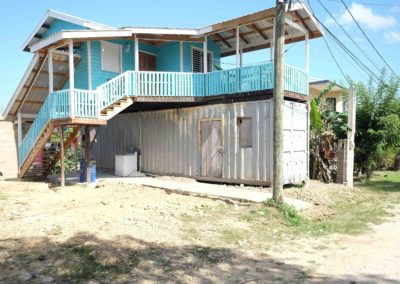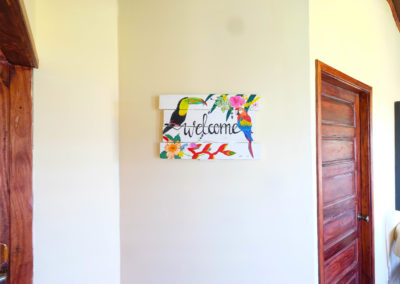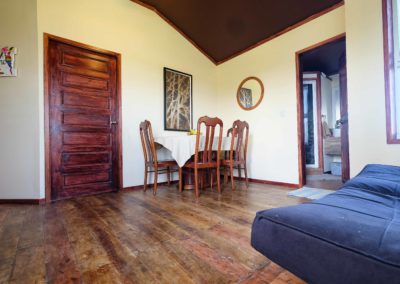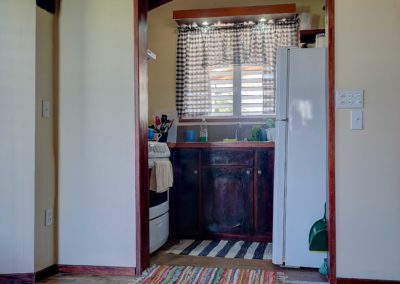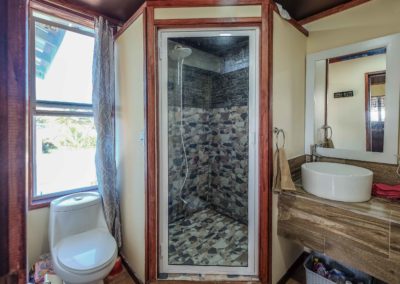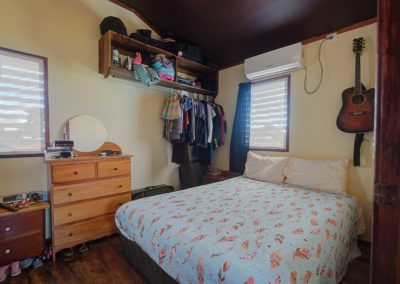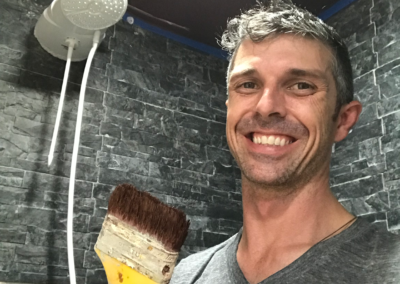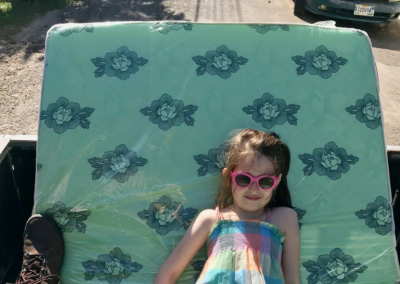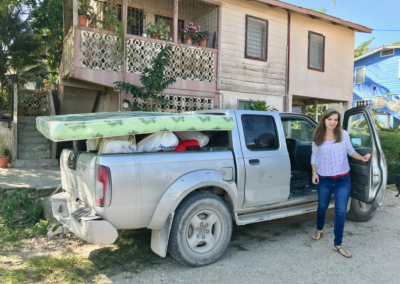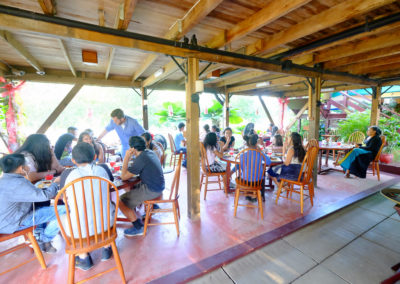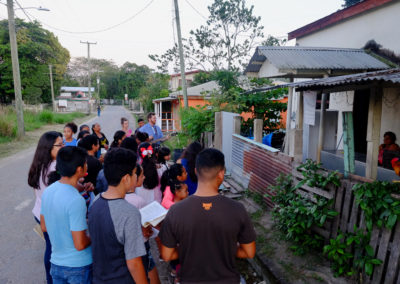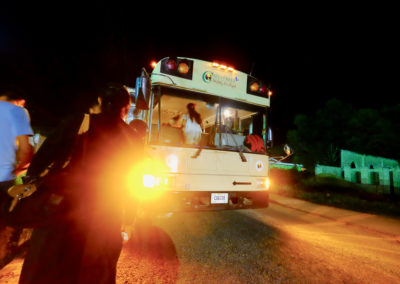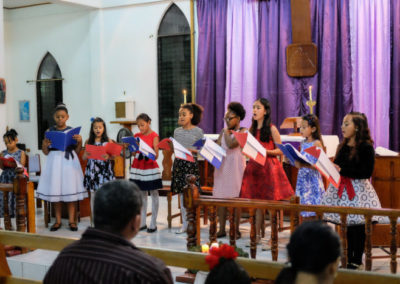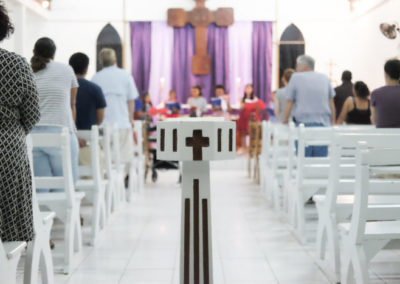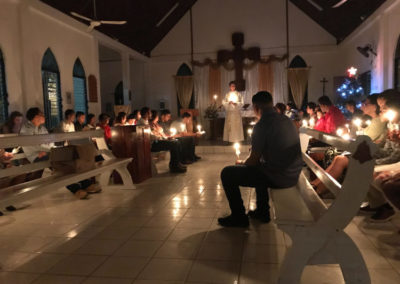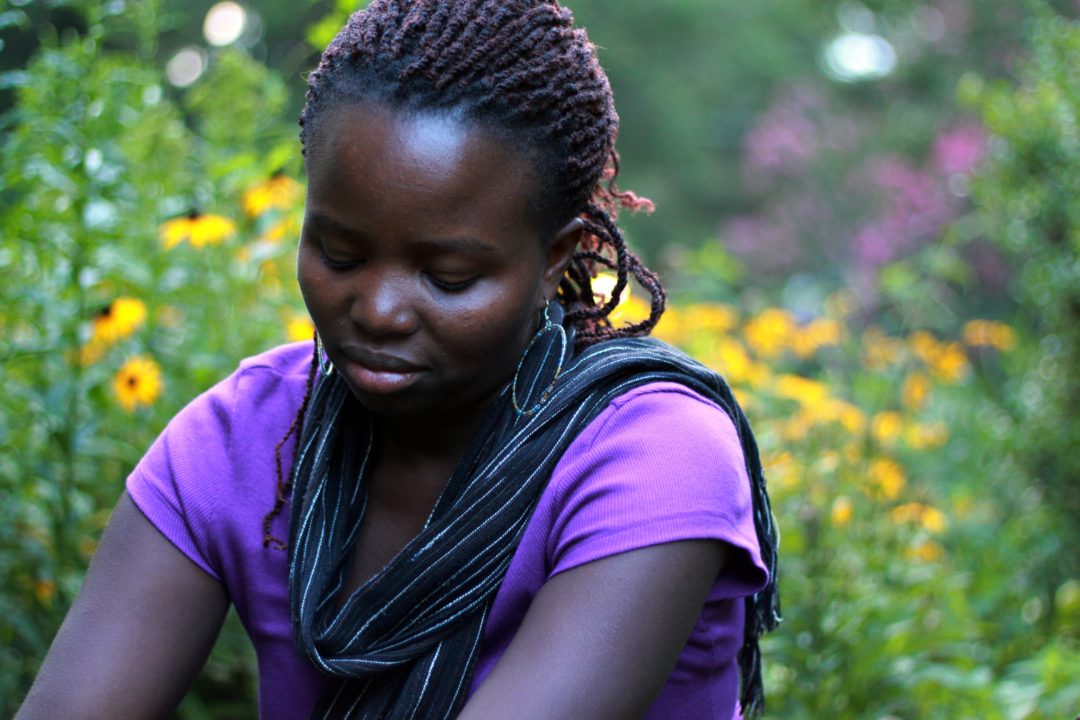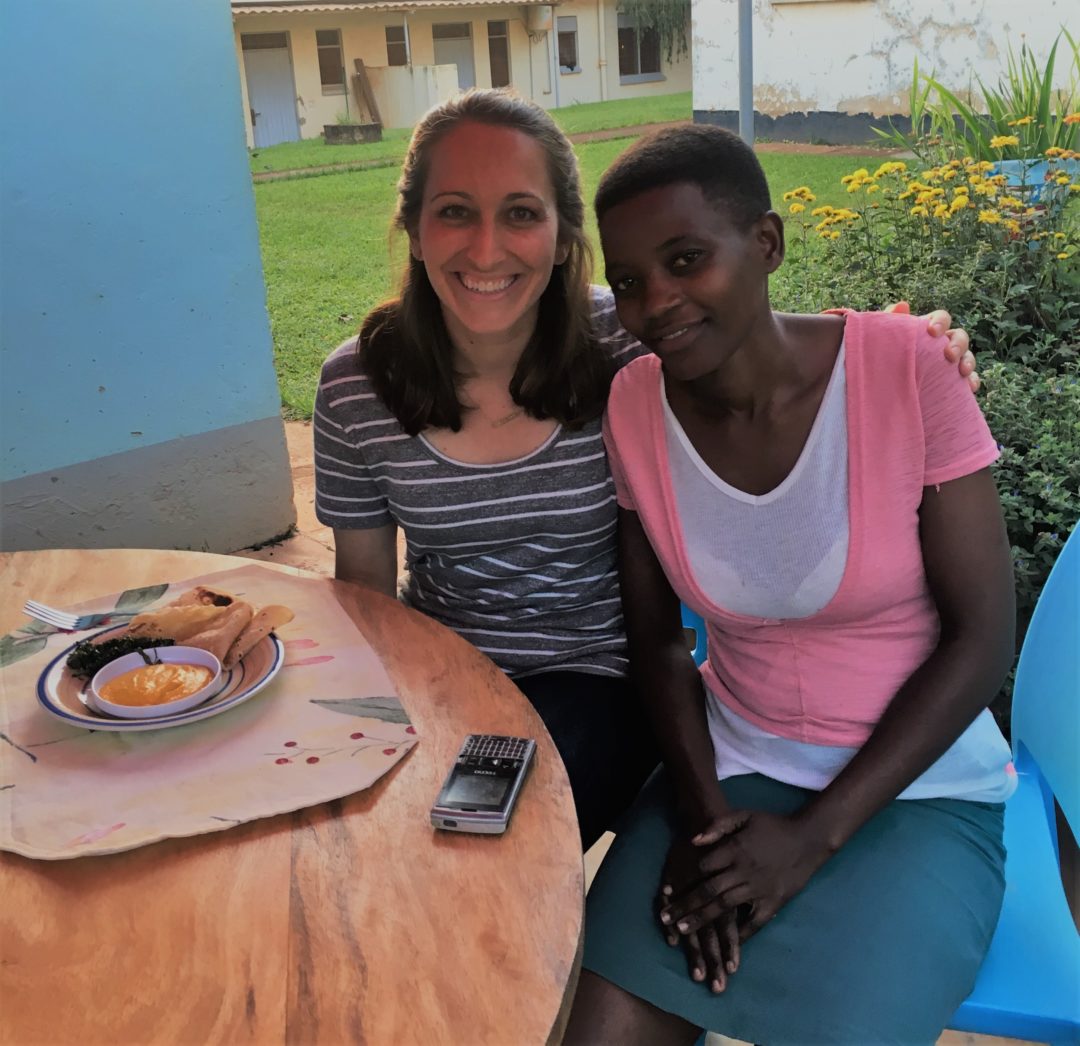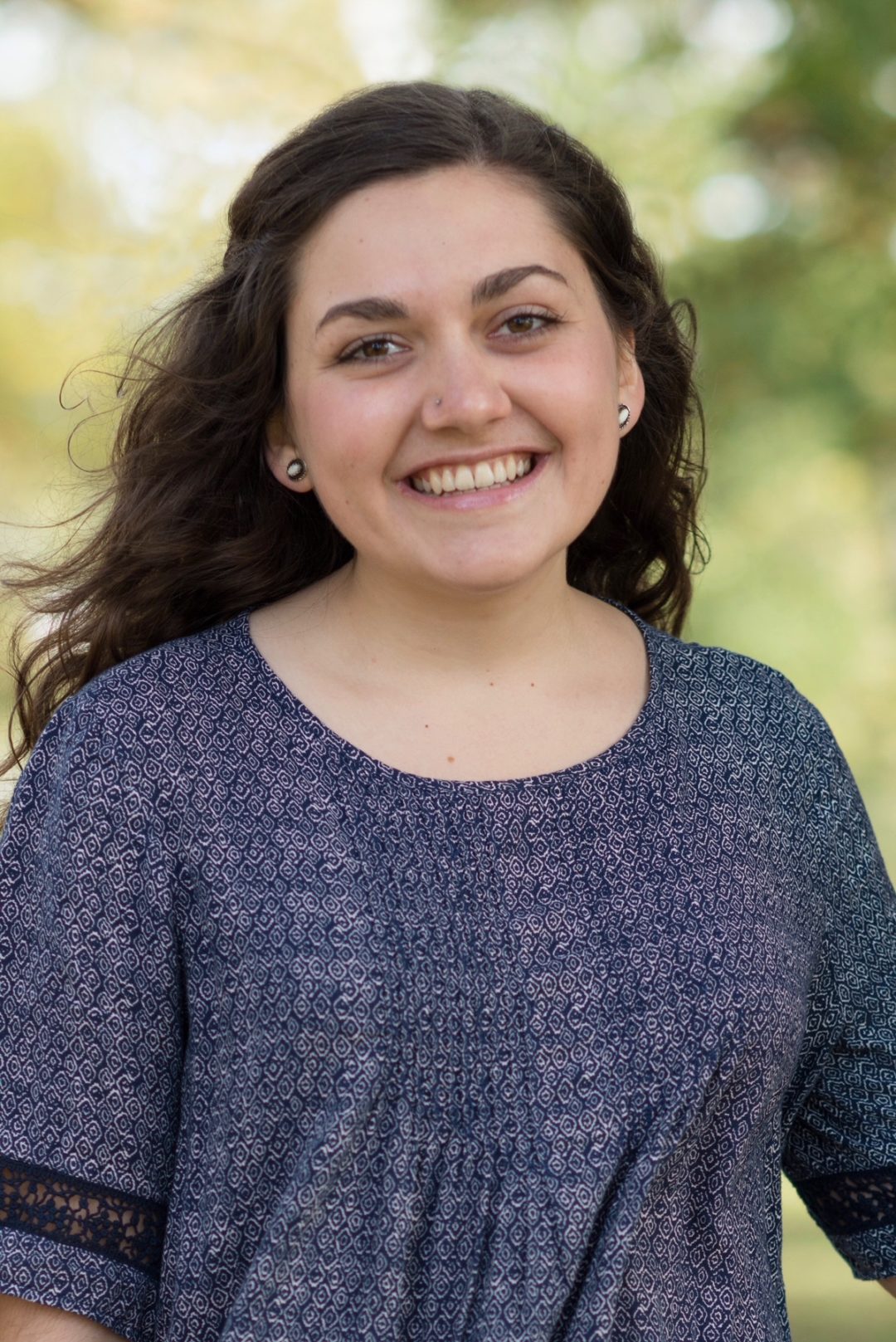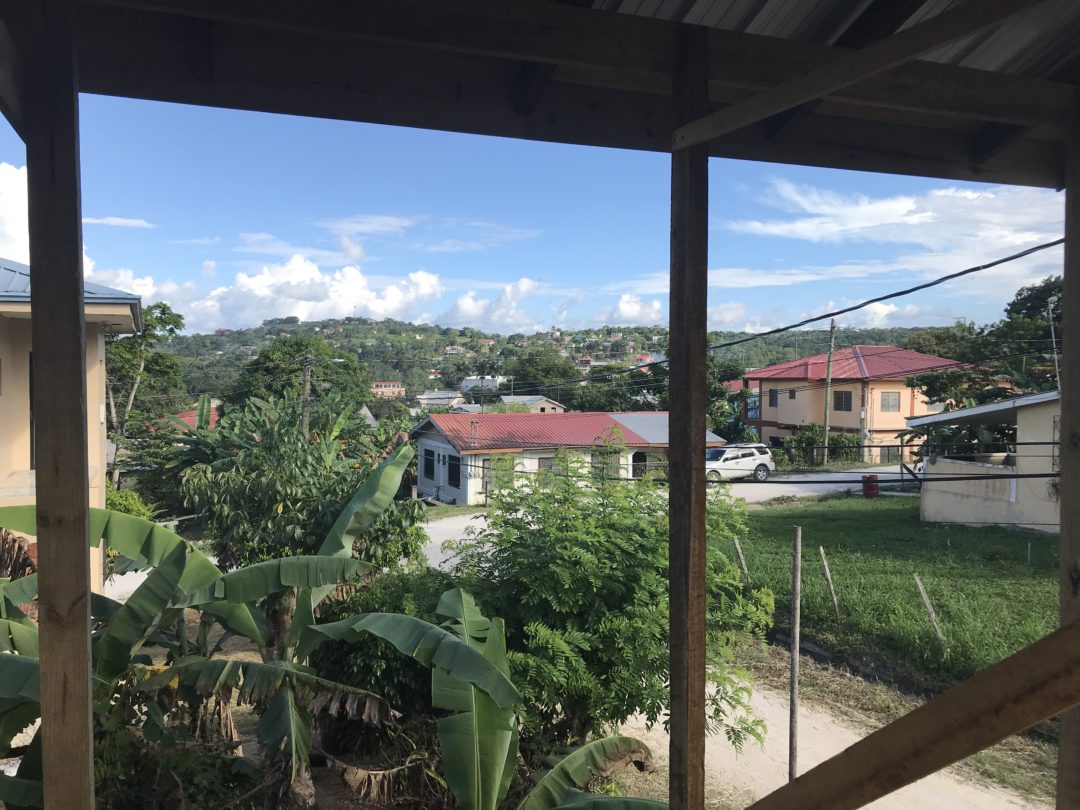by Evan and Missy Hansen | Dec 30, 2018 | SAMS Missionaries
Home Photos and Work Update Edition
Hi all! This is Evan writing. As usual, this will be heavy on photos and lighter on text. We want to show you photos of our house now that we’re settled in. We also want to show you some photos of what we’ve been doing with St. Andrews.
First, two notes for prayer:
1) The deadline is approaching for Delta to find Annabelle’s blanket “Chewie.” Please pray they can find it and for Annabelle to take it well if they cannot.
2) If you would like to support our work here in Belize, we would be most grateful. You can make a tax deductible donation through SAMS in order to do this. Here is a link to our giving page.
Our New Home
This home has been such a huge blessing for us. We’re so grateful for our landlords who are also our new neighbors. They have been so generous and welcoming. We have been walking everywhere and are enjoying finding the closest places around. Sometime soon I’ll show you where we shop when we’re not at the market. These stores are pretty awesome.
Back to the house. It’s small. Under 500sf small. It has 1 bedroom and 1 bath. The kitchen is TINY. The porch and the view are huge and as we’ve mentioned, it’s only a 5 minute walk to most places in town. The first thing we did was hang the hammock on the porch. It has been getting non-stop use. It’s taken us a while to gather all of the things we need, but we think we’re mostly set with pots, pans, towels, storage, etc, and we can finally stop feeling like we’re bleeding money!
Be sure and look at all of the photos, including some of us moving in. You should be able to click one photo and see a slideshow with captions.
Front of House. Yes, it IS built on top of a shipping container. The container isn’t part of the living space.
Main Room. When it’s just us, the table can be up agains the wall.
Bedroom. You can see Annabelle’s bed on the floor. We had planned on having an actual frame there, but it turned out to be just a couple of inches too short for that. She doesn’t mind. 🙂
Living Room. They provided us with a little futon. It wasn’t supposed to be furnished, but they did it anyway.
Kitchen. This is definitely a 1 person kitchen. You can’t open the fridge and oven at the same time.
Bathroom. This bathroom is SO much nicer than we had expected.
Bedroom 1. They left us room for a queen bed!
The Hammock. Can you spot the happy kid? The table and benches outside were another great addition from our generous landlords.
Laundry Room. This is where we do laundry. It is so weird having all of the plumbing outside. Every place I’ve ever lived, this wouldn’t work in the winter!
Helping out. We were cutting things close for our move-in date, so I decided to go help out.
Riding in the truck. I grew up riding in the back of trucks. When we were moving our mattress, I decided to let Annabelle have that same experience. She loved it!
Stuff in a truck. HUGE thanks to Father David and Mary Beth for loading their truck with our stuff!!
Community Life
As we said before, much of our time thus far has been spent getting immigration stuff sorted and getting our family settled. We’re here for a year, so we’re trying to be patient. Tomorrow, Missy will go meet with local mental health professionals. I will start playing guitar for worship next week.
In the meantime, we have been joining in with the life of the church as much as possible. Here are a few photos for you!
Dinner Before Caroling. A local restaurant and resort hosted the youth for dinner and generously provided a bus and driver to take us around.
One of our caroling stops. The group traveled around town, piling out of the bus to sing. At some stops, we brought gifts which would help make sure the house would have a proper Christmas feast!
The bus provided by Chaa Creek for Caroling.
Lessons and Carols 2. This group of young ladies did a fantastic job of leading us through the story of Christmas through song and scripture readings.
Christmas Eve Service. This took place at 10pm on Christmas Eve. It would have been at Midnight, but the entire town erupts in fireworks at midnight! Joy to the world, indeed! Needless to say, we didn’t get much rest.
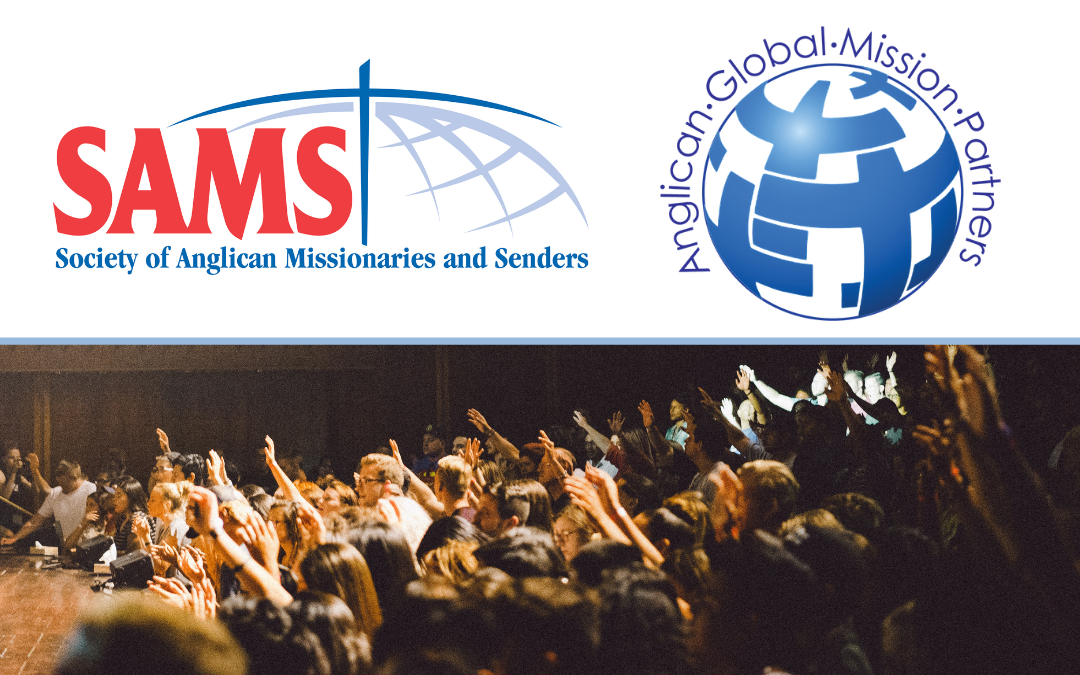
by SAMS-USA | Dec 21, 2018 | SAMS Missionaries, USA
Society for Anglican Missionaries and Senders (SAMS) joins the collaborative effort of Anglican Global Mission Partners at the Urbana Student Missions Conference, St. Louis, December 27-31, 2018
Dedicated to calling whole-life, whole-world disciples, Urbana is an eye-opening global missions conference, a sacred space for college and graduate students, faculty, and church leaders to hear God’s call. SAMS will once again be at Urbana seeking to connect with young adults who are discerning a call for crossing cultures to share the Gospel of Jesus Christ. Additionally, the mission network Anglican Global Mission Partners (AGMP), that SAMS is a part of, will exhibit at the conference and for the first time will coordinate a collaborative exhibit in the Outreach Section that will bring together Anglican Frontier Missions, Global Teams, New Wineskins Missionary Network, and Trinity School for Ministry (in the Seminary Section). The partners will be ready, eager to guide and pray for participants as they seek what God might be calling them to. You may discover more at https://urbana.org/.
If you are coming or are sending young adults, please email Jenny Noyes at jenny@newwineskins.org, the AGMP Exhibit Coordinator.
AGMP will also host a Saturday night reception at Urbana. All who have an interest in mission and how Anglicans are engaging in this mission around the world are welcome to join us at a meet and greet reception with food and drink at 9:30 p.m. on December 29. We will gather at J.F. Sanfilippo’s Restaurant (in the Drury Inn & Suites just one block from the Dome at 705 N. Broadway) on Saturday immediately following the evening session. Bring a friend! Contact Nita at nitadempsey@sams-usa.org if you desire more details.
Urbana is letting students know about mission trips in which they can participate. If you have upcoming mission trips planned that would welcome the addition of college students, please email Jenny at jenny@newwineskins.org with those details as well.
Following Urbana, SAMS will also be represented at the Cross for the Nations Conference, Louisville, KY, January 2-5. “Cross exists to see our generation live for the most loving cause in the universe: bringing people from every tribe, tongue, and nation into the everlasting joy of knowing and worshiping Jesus.”
Please pray for the SAMS teams composed of missionaries, missionary Bridgers, and staff that will be representing the Society at these upcoming university student and young adult conferences: Urbana Student Missions Conference, December 27-31; Cross for the Nations Conference, January 2-5; and Jubilee, February 22-24. Pray also that many young people will respond to the Lord’s call to the nations.
by Evan and Missy Hansen | Dec 15, 2018 | Belize, SAMS Missionaries
Dear Friends and Family,

Annabelle was such a great traveller!
This is Missy writing. What a time we’ve had! And I mean that in every way.
We are thrilled to be here in San Ignacio with David and Mary Beth and many lovely Belizeans. Annabelle wrote in her journal that her “first day in Belize was fun, fun, fun!”

And before we left we cannot measure or count how many cards, gifts, emails, hugs, and prayers were given to us. We felt, and continue to feel, truly loved by so many. There are many stories to be told of generosity, unexpected goodness and kindness in those final days. And honestly, the months prior to leaving are a series of miracles small and large – like getting renters for our house without having to advertise and who were understanding of what we were facing with leaving the country for a year.
At the same time, the two weeks prior to leaving, and our trip down here, were fraught (and I do not use that word lightly) with challenges. They have and are costing us a lot of money, countless hours, and immense amounts of energy. I thought about listing them all out for you but I’ve decided to shorten this by combining them into categories:
The House Fiascos: Numbering 7 of significance and including everything from possibly losing homeowners insurance on the cottage, to dead HVAC, and bacteria in the well at the cottage.

The Motorcycle Fiascos: I won’t go into much detail on this as I don’t fully understand all that was wrong with it (except that it was a number of things and all quite stressful). In this case the end result is that it was sold to a good home, though for $2000 less than we hoped. We are extremely grateful that it sold!
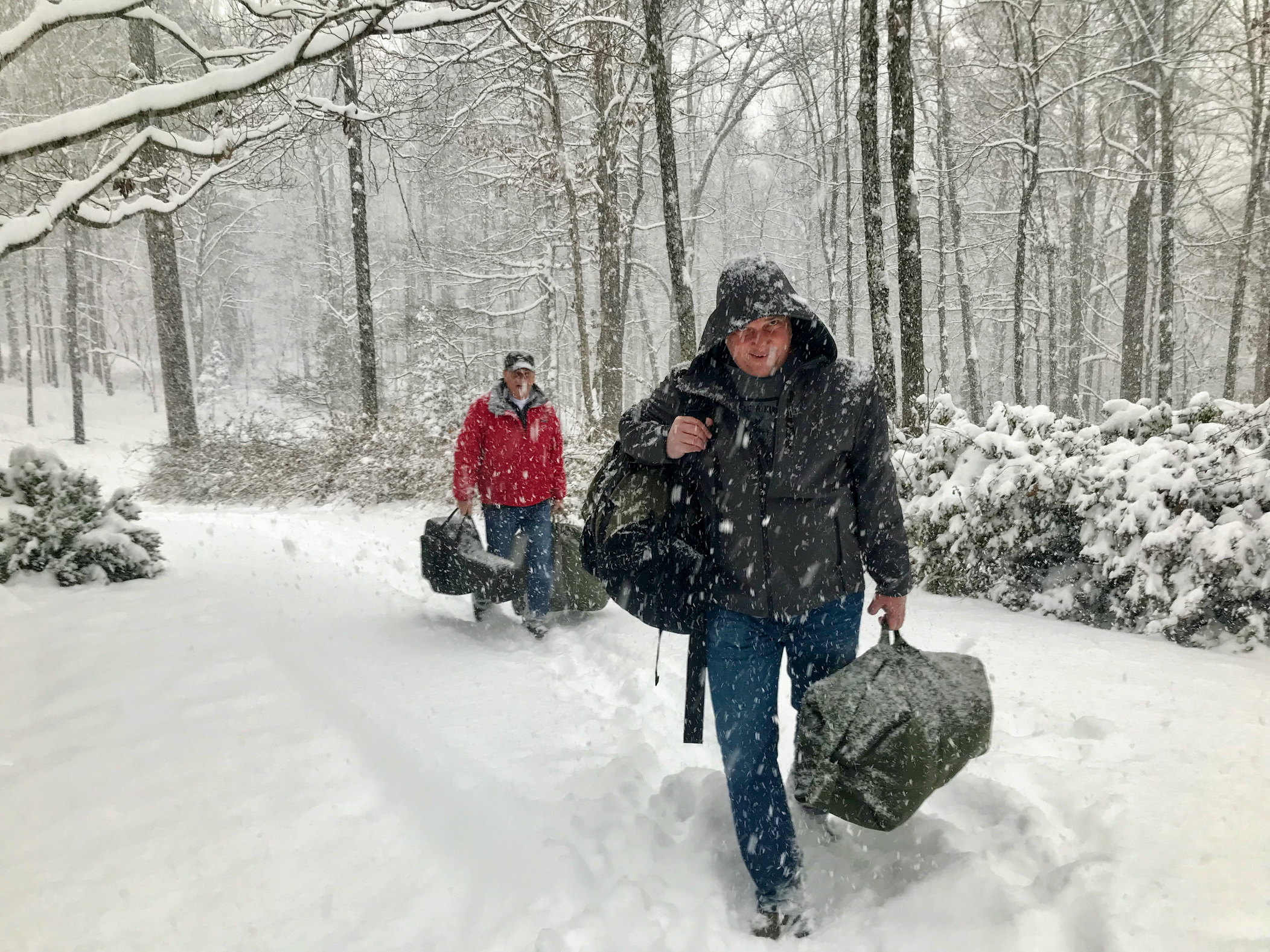
The Weather Fiasco: A foot of snow was unexpectedly dumped on Charlottesville the day before we were to leave. The prediction was 3-5 inches. This affected our leaving in a variety of ways – but we left!
The Travel Fiascos: Numbering 3+ of significance and including having our train to Baltimore be canceled, our rental car pick up office being closed due to snow, and almost not being allowed on the plane to Atlanta.
I kept saying all along that whatever happened it was going to be alright because we were getting on the plane on December 11th. However, that was truly challenged when we almost weren’t allowed on the plane and ended up being let on at the very last minute. Once we were on the plane in our seats, my eyes just kept overflowing. I have shed more tears in the last couple of weeks (for the good, beautiful, and true things and for the heart breaking, stressful, and difficult) than many other years of my life. I think it is fair to say our bodies are still weary but our souls are full. And we are so grateful to be here.

Prayer Requests:
– Please pray for our work permits, Annabelle’s dependent/student permit, my ministry of health application, and our immigration status. There are a lot of particular requirements, some of which are unexpected, and we need divine intervention to move things along.
– Unfortunately, we left Annabelle’s “chewie” (blanket) on the last plane. Please, please pray that Delta is able to track it down and return it to us. There have been many tears over the loss of chewie. 🙁
– Please pray for us earnestly. It truly feels as though there are forces at work that do not want us here and need all the divine help we can get, as we believe God does want us here.
We absolutely could not be here without you all. We are sending hugs and blowing kisses.
Thank you for reading. We love you!
Note from the editor (Evan) – I’m working on another post to give you an idea of what we’ve been doing since we landed.

by SAMS-USA | Dec 13, 2018 | SAMS Missionaries
SAMS and a few SAMS Missionaries will be at Urbana18 and they look forward to meeting you there! Urbana is an eye-opening global missions conference, a sacred space for college and graduate students, faculty, and church leaders to hear God’s call. Are you thinking about your calling to mission, but are not sure where to start? Come talk to these missionaries who have experience in the mission field! They will be there to answer questions as well as pray for you and your own calling to serve in the field by sharing the transforming love of Jesus Christ around the world.
Lucy Chaves, SAMS Missionary to Kenya
Lucy is originally from Kenya and at a young age, she felt drawn to the love of Christ. In the same way that she experienced His kindness and mercy, she wanted to share it with others. Lucy mentors young women and encourages those in difficult circumstances. She and her husband David concentrate their efforts in Nairobi, Kenya, on helping youth to develop a Biblical worldview as well as business skills. IHope Photography is one of the business they helped youth develop. They currently live in Virginia where they are raising their three children, but they make frequent trips to Kenya to encourage those in the ongoing programs. They hope to develop further ministries in Western Kenya.
Jessica Tetirick, SAMS Missionary Bridger to Uganda
A Texas A&M grad, and a CPA, Jessica didn’t have missionary service on her mind. However, after going on a short two-week mission with her church to Malawi, she asked God about her role in mission. God led her to SAMS where she served as a Bridger at Uganda Christian University alongside another SAMS Missionary. While there she was able to use her accounting and work background to teach business classes.
Madeleine Ruch, SAMS Missionary Bridger to Brazil
Madeleine is currently a college student at Wheaton College. She spent last summer serving in Recife, Brazil, as a SAMS Missionary Bridger. While there she served at a daycare center in Recife. While there she helped with any needs included caring for children, educational lessons, and helping with administration. She even helped the office translate some paperwork into English. She also led worship at a local Anglican church and got involved in a young adult small group.
Will these SAMS Missionaries see you at Urbana18? For more information about Urbana and how to register, click here! Find other SAMS Missionaries on the Meet our Missionaries page where you can sort by ministry and country.

by Ron and Debby McKeon | Dec 2, 2018 | Brazil, Children at Risk, Latin America, SAMS Missionaries
We are so very thankful to God for your continuing interest, prayers and financial support for our Brazil ministry. Having just completed our first full-time 3-year term on the mission field, we need to ask you to partner with us and recommit to another term of monthly support of $10, $15, $25, $50, or more. We actually need to raise an additional $3,000 per month for our ministry to expand into other neighborhoods to inspire more leaders and equip future generations to plant communities of faith focused on rescuing children and families from child labor, sex trafficking and drugs. We are confident in Christ alone!
This letter features two testimonies, one from our Brazilian friend Valdomiro Santos, and a personal confession from Ron.
Valdomiro’s Testimony:
Dear Pastor Ron and Debby and your financial & prayer partners, I want to highlight the importance of Pastor Ron and Debby in our lives. From the moment we first met this couple, their willingness and joy of serving the Lord Jesus in another nation inspired us.
First, I speak of my relationship with Rev. Ronald, when I learned that I was going to be discipled by Pastor Ron, I thought, “How will it be?” I do not speak English and he is learning Portuguese and still had difficulty, I faced the challenge with great joy and today we do not need Google translator anymore, today the Portuguese spoken by Pastor Ron is excellent and this man of God has been fundamental in my life.
I will make some reports:
- Support for working life: In search of work I got approval at the Fiat factory in Goiânia – Pernambuco, a neighboring state of Paraíba, but the city where the factory is located is two hours away from João Pessoa. In the first process I went through and there was a problem and I was ultimately not approved in the last process, anyway, the story is long, but I want to record the help of Pastor Ron. Without the encouragement of Pastor Ron, I would not have participated in this selection process, since I did not have a car to make the trip to the factory. He and Debby are being a boon in my life and consequently in my family’s life.
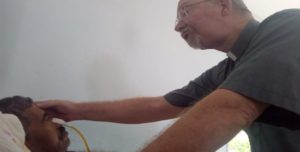
- Spiritual support for illness: A difficult moment in the life of my father-in-law was his hospitalization (90 days) due to appendicitis surgery. Pastor Ron was present, praying, ministering the life of Christ on him. Gradually he has been recovering and today he is doing his normal activities.
- Support for the ministry: Long ago God spoke to my heart about the ordained ministry, I was frightened, I always thought it was a thing of my head. To be at peace with my thoughts and feelings I made a silent prayer: “God if the call that you have for me is Pastoral, then confirm it through a person that I have no contact with, then Lord I will know that this call comes from You not from myself. Amen.” I, my son and my wife went to attend the service at the Anglican Church Vine that Bishop Flávio is responsible for, after the celebration the bishop invited us to go to his house and we were involved in many conversations when Pastor Ron and his wife Debby pass by the apartment and enter, reminds me of how we arrived in this pastoral call conversation plus the bishop explained the content of our dialogue, then Debby said: “since I first visited Brazil in 2006 I have been praying for your ministry.” After this confirmation of prayer, I stopped resisting God’s call to me.
- Always present in our lives…. Pastoral follow-up, visits on leisure days, quality time among friends. We praise and are grateful for your lives in our lives, God multiply in your lives everything you have done for us. We love you!! With gratitude and the Love of Jesus, Valdomiro Santos
Ron’s confession:
When my five daughters were young and I was beginning my personal relationship with Jesus, I failed to disciple my own daughters and invite them into my growing relationship with Jesus. I left this important part of my relationship with my daughters and Christ to my wife and the church. This mistake over the years caused great stress and strain on my relationship with my daughters. I deeply regret this sin of omission. I felt remorse that I did not model the life Christ intended for me and at times I felt like a failure as a father and stuck in shame not knowing how to set things right with my daughters.
Before I lost my total tongue to cancer my children will tell you I was angry all the time. After my surgery in 2003 to remove my total tongue and lymph nodes in my neck I went through radiation and chemotherapy. It was during this time I came to realize that I had experienced not only the removal of my tongue and healed of cancer, but I also experienced a supernatural change in my personality along with a redirection in my life targets and priorities. I realized that through my personal relationship with Jesus Christ all my sins were forgiven.
Since arriving for fulltime ministry in Brazil back in October 2015, God has opened the door for me to practice Biblical discipleship; the process of making disciples for Christ who make disciples for Christ. This ministry in Brazil has changed my life and opened the door for me to disciple my own children and their husbands through the use of technology, for example the telephone, voice and video calls over the internet and cell phone text messages.Today my children will tell you I am happy all the time. However, my children are still struggling to understand this change in their Dad and my call to serve God in Brazil.
Now, every day I wake up and ask God what will He have me learn today, then I listen for God to speak in the quietness of my heart, and then take the appropriate action, as I walk and grow spiritually in my personal relationship with my Lord, Savior and friend, Jesus Christ.
Please join in our efforts by making a financial gift to grow our ministry of equipping church leadership with Biblical principles that impact their actions and life patterns; to inspire the Church in Brazil for generations to come.
With every blessing and much affection,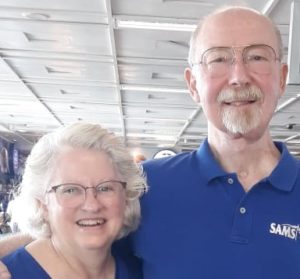
Ron+ & Debby
Make a secure tax-deductible financial gift on-line through our SAMS website:
by Evan and Missy Hansen | Nov 14, 2018 | Belize, SAMS Missionaries
– “What is your favorite part about Belize?”
– “We don’t know. We’ve never been there.”
– “You’re moving there for a year and you’ve never been there?!”
– “Yep!”
We have had the above conversation more than once. More often than not, it would continue with comments about our bravery. I think bravery and faith look similar, but are overlapping ideas. Bravery chooses not to fear; faith chooses to trust. I’m not sure Missy and I are being brave. Rather, I think we are having faith, trusting that our Father has good things in store for our family in Belize. We belive he has good work for us to put our hands to, and rather than experiencing fear, we are full of anticipation.
Fortunately, at least now I have seen Belize! I spent all last week there. The mission on this trip was to find a home in San Ignacio and to get to know the missionaries we will be assisting, David and Mary Beth Alenskis.
San Ignacio, Belize
San Ignacio is around 2 hours west of Belize City. David graciosuly agreed to pick me up from the airport and let me stay at their home all week. It was an adventure from the start with delayed flights, packed customs qeues, and overheating trucks. But though it was dark by the time we arrived home, we made it safe and sound. The first night ‘s meal consisted of Salbute’s from Lupe’s. We’ll talk food on another post, but let me say I will be eating a lot of these.
David and Mary Beth were wonderful hosts. We had many fantastic conversations over shared meals. I am genuinely excited for them to meet Missy and I believe the four of us can be great friends.
They both tapped into their network of friends to try and find us a place to live. We looked at so many places, but by the end of the week, we had a winner!
“Friendship has always belonged to the core of my spiritual journey.” – Henri Nouwen
This little beauty is a 325sf tiny home built with a shipping container as it’s foundation. It has one bedroom, a kitchen and a bath. Missy, Annabelle, and I will live here, sharing the bedroom. The open portion you see is a deck with a fantastic view of the city. We are so grateful to have found it! It is only a 5 minute walk for Annabelle to get to school. We found much larger (and in some ways nicer) homes outside of town, but our hope is that this is a simple time for us. Missy doesn’t want to drive and we don’t want to have to take a bus to get everywhere.
The owners are going out of their way to be accomodating. I’ve already been receiving updates with photos. They’re even letting Missy and I choose paint colors for the interior and exterior. We feel so blessed to have found this tiny little place. If you know us, you know it is perfect.
I was also able to visit Annabelle’s school. I think she is going to love it!
I’ll leave you with two photos. One of the school and the other a photo I took inside of St. Andrews Anglican Church. We hope to bring ourselves fully to this community, serving, learning and experiencing God in new ways and with new eyes.

